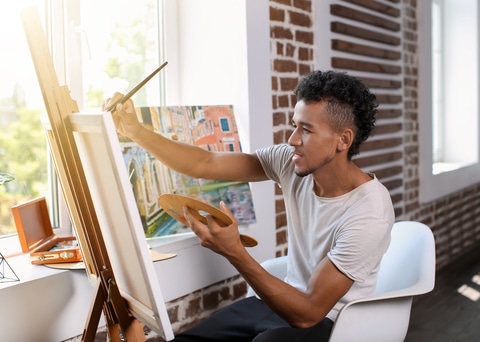
Lighting conditions greatly influence how colors are perceived. Different light sources have different color temperatures, which can make colors appear warmer or cooler. For instance, natural daylight tends to have a cooler temperature, while incandescent lighting is warmer. Artists need to consider the lighting conditions under which their work will be viewed, as this will affect how the colors in their painting are interpreted by the viewer.
Light and shadow play a significant role in creating depth and dimension in a painting. Proper lighting helps artists accurately perceive the values of different areas in their artwork. Strong lighting with distinct light and dark areas can create dramatic effects, while diffused lighting can soften the overall appearance.
Lighting also affects how the texture of a surface is perceived. Shadows and highlights created by light can enhance the illusion of texture in a painting. For example, a rough surface may appear more tactile when illuminated by directional lighting that creates strong shadows, emphasizing the surface irregularities.
Proper lighting helps artists avoid glare and unwanted reflections on their artwork. Excessive glare can make it difficult to accurately see the colors and details, making it challenging to make informed artistic decisions. Artists may need to adjust their lighting setup or use anti-glare materials to minimize these issues.
Lighting can significantly impact the mood and atmosphere of a painting. The choice of lighting can evoke specific emotions in the viewer and enhance the overall narrative of the artwork. For example, soft, diffused lighting may create a serene and peaceful atmosphere, while harsh lighting can convey tension or dram
To optimize the lighting conditions for painting, artists often use a combination of natural and artificial light sources. Natural daylight is highly desirable due to its full spectrum of colors. North-facing windows are preferred for providing consistent, diffused light throughout the day. Artists also use artificial lighting, such as adjustable lamps and studio lighting, to supplement or control the amount and direction of light falling on the artwork.
It is essential for artists to set up their working area in a way that ensures consistent lighting conditions throughout their painting process. This consistency ensures that the colors, values, and textures are accurately represented and allows for cohesive artwork.
In conclusion, lighting has a profound impact on the creation and perception of artwork. Understanding how lighting affects colors, values, and textures helps artists accurately depict their subject matter and create the desired mood and atmosphere in their paintings. By carefully considering and controlling the lighting conditions, artists can elevate the quality and impact of their artwork.
If you want to learn more about lighting and other techniques, sign up for Yarnell School today. You will have all of the lessons of a master artist at your fingertips so you can learn on your own schedule.